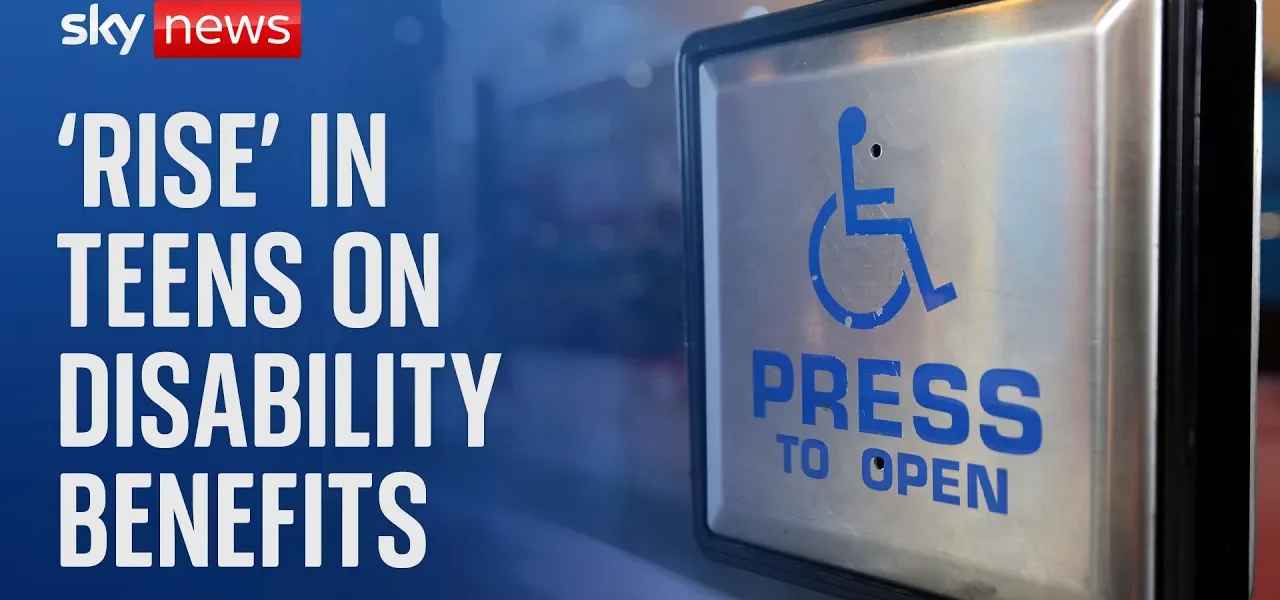The Rise of Teenagers Receiving Disability Benefits in the UK

This article explores the significant increase in the number of teenagers in the UK claiming disability benefits, examining the contributing factors and implications for the future.
Introduction
Recent statistics reveal that the number of teenagers in the UK receiving disability benefits has doubled over the past decade. According to the Resolution Foundation, approximately 1.2 million children in England and Wales live with a disability, with over half of these children claiming government support. This surge in claims raises critical questions about the factors driving this trend and its implications for policy and healthcare services across the nation.
Understanding the Statistics
The data from the Resolution Foundation highlights a concerning trend: the number of children claiming disability payments has increased significantly, particularly in three main areas:
- Behavioral Disorders: Claims have risen by 562%.
- Learning Difficulties: Claims have increased by 117%.
- ADHD: Claims have grown by 70%.
This significant increase suggests a deeper issue within the British healthcare and social support systems, warranting further investigation.
Reasons for the Increase in Claims
Multiple factors contribute to the rise in the number of children claiming disability benefits. These can be broadly categorized into two main areas: policy choices and health trends.
Policy Choices
Government policies play a crucial role in shaping the landscape of disability benefits. For instance:
- The two-child benefit cap may incentivize families to claim child disability living allowance, as it creates economic pressures for families with multiple children.
- Changes in the eligibility criteria and benefit structures have influenced how families navigate the support system.
Health Trends
Beyond policy, there is a notable increase in health issues affecting children:
- Autism Diagnoses: There has been an exponential rise in autism diagnoses, reflecting greater awareness and diagnosis capabilities.
- Medication for ADHD: More children are being prescribed medication for conditions like ADHD, leading to a higher number of claims.
These health trends indicate that the rise in claims may be symptomatic of broader societal and healthcare issues.
Financial Implications of Rising Claims
The doubling of claimants has significant financial implications for the government. The costs associated with child disability payments have also doubled over the same period, leading to concerns about sustainability:
- The annual cost of child disability payments is expected to rise by 11% each year until 2028-2029.
- As the number of claims continues to grow, so too does the burden on public finances.
This situation creates a pressing need for policymakers to reassess the funding models and structures in place to support these benefits.
Transitioning to Adult Disability Benefits
Another critical issue identified by the Resolution Foundation is the transition from child disability payments to adult benefits:
Approximately 25% of young people who received child disability living allowance do not go on to claim adult disability benefits at age 16. This represents a significant gap in support and raises questions about the effectiveness of current policies.
Potential Solutions
To address this drop-off, experts suggest several potential solutions:
- Increasing the transition age from 16 to 18 or 19 could provide young people with more time and awareness to navigate the claims process.
- Implementing a system similar to that in Scotland, where the transition occurs later, may enhance the support offered.
By refining the transition process, the government could improve outcomes for young people moving into adulthood.
Conclusion
The doubling of teenagers receiving disability benefits in the UK is a multifaceted issue influenced by policy changes and increasing health challenges. As these trends continue, they pose significant implications for both public health and government finances. Addressing these challenges will be crucial for ensuring that children and young adults receive the support they need as they transition into adulthood. For further insights on disability support and government policies, check out our related articles on child disability support and adult disability benefits.
“`




